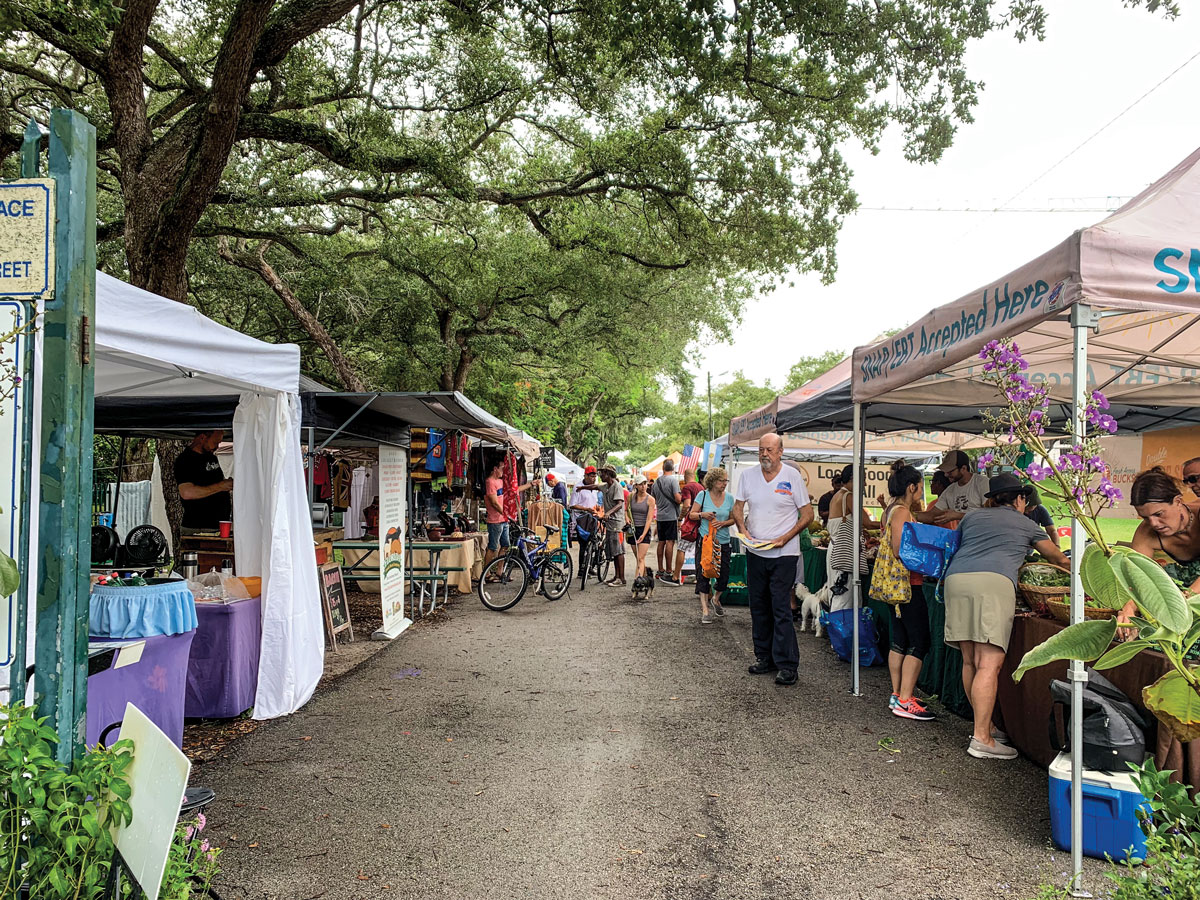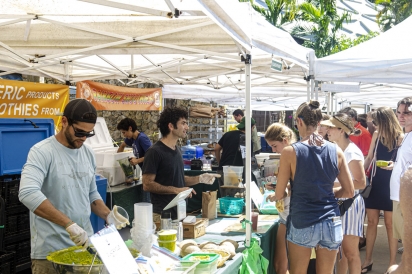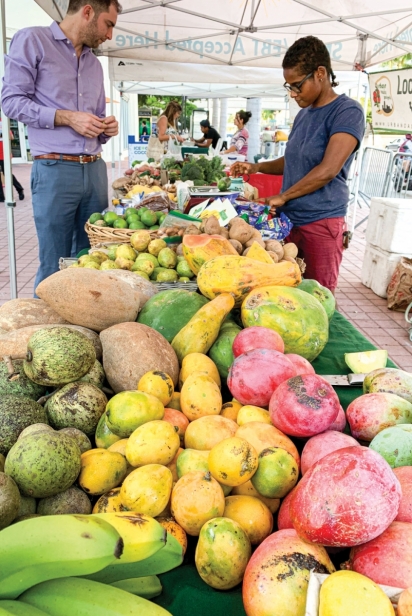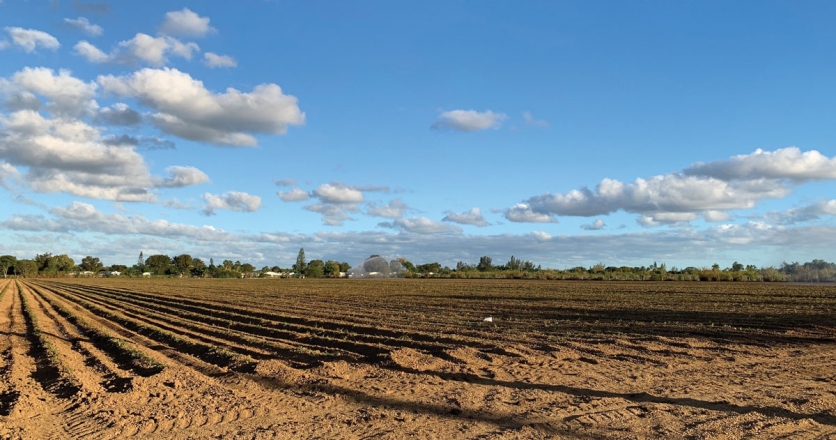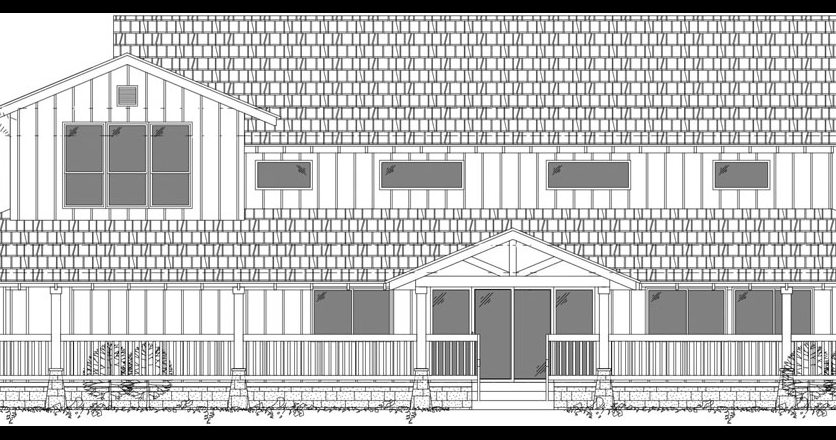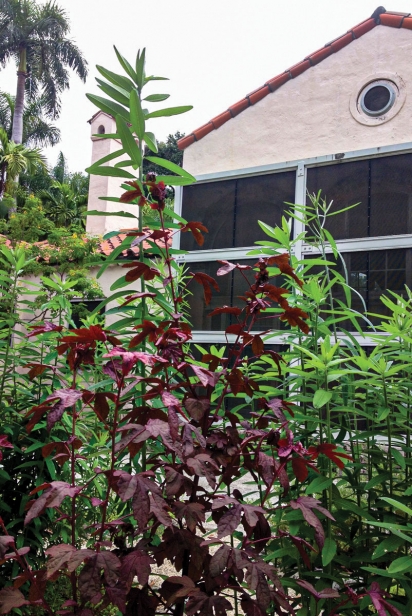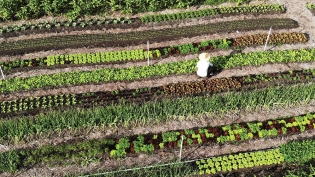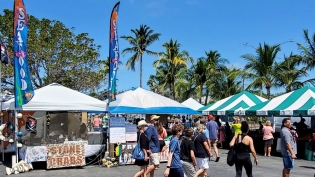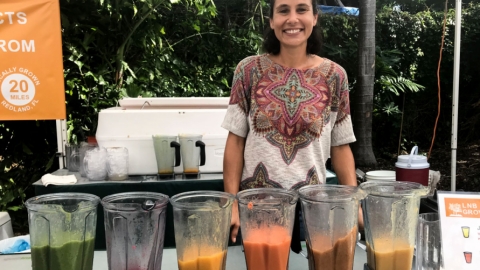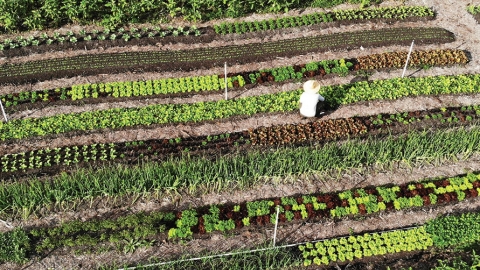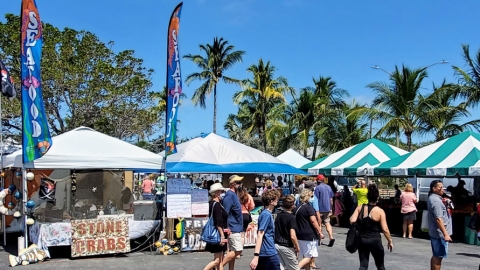Growing Better Farmers Markets
On a typical Saturday during the South Florida growing season, 10,000 people will visit the Saturday Morning Market in St. Petersburg. Stall after stall is heaped with fresh produce from local farmers, including Worden Farm, an 85-acre organic farm in Punta Gorda, and small farmers for whom the market is a primary source of sales. Throughout the Al Lang Stadium parking lot are 170 vendors selling everything from popsicles to pickles: fresh seafood, baked goods, jams, chocolates, cheeses, salsas, chutneys, and prepared foods from all over the globe. Every week, there’s a different band, cooking demos and other activities, making it a lively gathering place for locals and visitors.
Could South Florida support a farmers market like this?
Every week, 50+ farmers markets in South Florida – Broward, Miami-Dade and Monroe counties – are open for business. They’re located in parking lots, parks, gardens, vacant lots, outside and inside shopping malls. Some markets have no local farmers at all. Others are food courts. Still others are arts and crafts markets with a few produce resellers.
To newcomers, farmers markets in the subtropics look different from their counterparts in more temperate climates. Summer, not winter, is the slow season, where tropical fruits and vegetables make up most local produce. Winter and early spring are the busiest times, when it’s the height of the growing season.
Only 10 years ago, there were only a dozen or so markets in South Florida, and before that, just a handful: Coconut Grove’s organic market, Coral Gables’ winter market and along Lincoln Road. Then “the world started turning green,” says Claire Tomlin of The Market Company. “Everyone wanted a farmers market.” One of the pioneers in the business who started many of today’s markets, she currently runs markets on Lincoln Road, Miami Shores and others.
To allow farmers markets, Miami-Dade County had to come up with a code change, says agriculture manager Charles LaPradd. “A farmers market was an unusual use, like a carnival, prohibited in residential districts.” The new code says farmers market sales should be limited to “edible farm products including fruits and vegetables, provided that a majority of the agricultural products offered for sale are grown in Miami-Dade County” and that at least 51 percent of the products sold are fruits, vegetables and plants. But those requirements refer to farmers markets in unincorporated parts of the county, not the municipalities that are home to most of today’s farmers markets.
What defines a farmers market anywhere depends on the individual community, says Ben Feldman of the Farmers Market Coalition, a national nonprofit group dedicated to strengthening farmers markets. “In California, the standard for what constitutes a farmers market is quite high,” he says. “Consumers have an expectation of what they’re getting – buying directly from the farm that grew the product.”
A market wouldn’t be a farmers market without farmers. But not all produce vendors in South Florida grow what they sell. Resellers buy fruits and vegetables from wholesalers at places like the Miami Produce Center in Allapattah to sell at markets. “Miami is known as a low-price-point market,” says LaPradd. “Lots of produce is dumped here and sold at low prices.” Some resellers are also small farmers, who sell their own produce next to imports. This practice gives consumers a bigger choice and lets them do one-stop shopping at the market, especially for off-season products, like tomatoes or strawberries in the summer. On the other hand, without seeing labels of origin, customers can get confused. And sometimes, vendors are deceptive about where their merchandise comes from.
When Walt Chefitz of LNB Groves interviews their customers for their weekly newsletter, he always asks what they think their market at Pinecrest Gardens is missing. Often, the answer is “farmers.” Ethan Shapiro put it this way: “The thing I’d like to see more of, to be honest, is food and produce vendors that are growing things locally. If you really drill down to who the local people are, that are producing something from the earth, from their farm – there are only a handful. I’d love to see more people putting in the hard work to grow things as opposed to going to a distributor and just putting them out.”
How the Saturday Morning Market Grew
“When we started out in 2002, we had no farmers,” says Gail Eggeman, one of the founders of the Saturday Morning Market in St. Petersburg. It took them four years ago find them, and even then, she says, some lied about being farmers. So they started personally inspecting the farms to make sure they grow what they sell. “We started with resellers, but quit doing business with them,” she says. The Saturday Morning Market goes out of its way to support small farmers, working closely with local agricultural agents to identify and support start-up farmers. “We offer reduced market fees and scholarships to the Florida Local Food Summit,” she says.
Offering a break on vendor fees to encourage small farmers to be part of a market is one way to attract them. “We’ve done that before,” says Art Friedrich of Urban Oasis Project, a nonprofit that sources produce from a number of farms and labels where they’re from. Mike Huter of Taste of Redland, which sells and promotes Redland-raised produce online and at events, takes it a step farther – he believes farmers should be paid to appear at farmers markets. They are, after all, the stars of the show, and the reason people show up.
With dozens of markets, most operating on weekends, there aren’t enough small local farmers to go around. Southwest Community Farmers Market at Tropical Park and the Legion Park Farmers Market operated by Urban Oasis feature local farmers year-round. The popular Pinecrest Gardens farmers market, there are more local farmers than most of the others. LNB, V&B Farms and Bee Heaven Farm are regulars, along with resellers who may also stock local produce in season.
But it’s tough for many markets to find farmers because farmers themselves are having a hard enough time making a go at it. It’s a difficult, demanding job even without what Mother Nature throws at them: hurricanes, pests, disease. Add man-made issues – developers buying up farmland and driving up costs – and you’ve got a recipe for frustration.
Respected urban farmers Tiffany Noé and Muriel Olivares of Little River Cooperative, who work with Chris French of French Farms, surprised the local food scene this summer by announcing they were taking a year off from farming and their CSA this season (they will still operate their Allapattah nursery and sell at the Legion Park Farmers Market during the growing season). A key reason is the high price of buying land for farming.
“We’ve been operating on leased land since the beginning and we are endlessly grateful for the landowners that have hosted our little urban farms over the years, but it’s hard to ignore the fact that not owning our farmland comes with many problems,” they told their followers. “After being in the grind this long, we’ve come to the conclusion that eventually a farmer needs some kind of land security in order to take their farm to the next level.”
Both Little River Cooperative and French Farms have moved twice in the past few years, akin to starting from scratch every time. French, who grows organically, says farmers market customers know and trust the farmer,” he says. But dealing with developmental pressure, climate change and lack of what he calls good land stewardship in South Dade is discouraging, he says. “It’s hard to get excited about farming down there.”
When Developers Move In
South Dade’s fields are quickly giving way to development. One of the most visible examples is in front of iconic farmstand Robert Is Here in Florida City. Once used for growing produce, the field across the street is slated for development, and its owners are seeking county approval for higher density housing. While development is already allowed on the site, Heather Moehling of Robert Is Here says the longtime family business wants the property to stay at its present zoning for lower-density development. Otherwise, they’re afraid the tourists headed to the Everglades won’t get to enjoy the rural area they’re expecting.
“Instead of boniato or green beans or squash, they’re going to see a concrete wall and a lot more cars on the highway,” she says. “It takes away from the ambience of what the Redland was historically and pollutes the entrance to Everglades National Park.” They have asked supporters to sign a petition asking that the change be denied; the fall county hearing has been delayed until early 2020.
Zoning and land use have always presented challenges to local governments, says local foods consultant Sharon Yeago, who was involved in starting the urban farm, Dania Beach Patch. “Fifty years ago, those rules were made with developers in mind. What South Florida has to realize is there are different models for markets.” It may take moving out of the traditional Redland agriculture district, plus some creative thinking, to find affordable farmland. Moses Kashem of Urban Vegetable Project has found a way to make his farming career work. He’s growing on land owned by a church and selling his produce – two varieties of kale, radishes, cherry tomatoes, three types of lettuce, Asian eggplant, cucumbers and dill – to Whole Foods Markets. To find space, he looked for the biggest landowners and reached out to them with a proposal. As part of his current deal, he farms and provides the church with vocational training. “I would encourage prospective farmers to look at the biggest landowners – universities, hospitals, churches,” he says. “Never do your own negotiation. I lawyered up so I can’t be kicked out on a whim.” He’s now looking to expand his two acres to 20.
Help for Farmers
Young and new farmers can also tap into existing resources. As agriculture manager, Charles LaPradd says part of his job is helping the industry, including providing information on land, financing and marketing. “Do your due diligence,” he says. “Land is available.” John Mills of Redland Ahead, a nonprofit whose mission includes training veterans and others to become farmers, knows annual leases puts young farmers in a dilemma because they’re not able to invest in long-term work that will make the land productive. “But there are farmers willing to make longer leases, and they’re now open to anyone with less than 10 years experience,” he says. They’ll also help guide them to resources for planning, budgeting, finding grants and low-interest loans.
And the need for more farmers is there, with even more farmers markets are opening throughout South Florida. In Surfside, a small Sunday market has opened by Javier Valmana, who at only 19 has already logged two years as a market vendor, Wavey Açai Bowls. His market has the full support of mayor Daniel Dietch. “If you make it special, we will support you,” he says. In Coconut Grove development is knocking at the door on the site of the village’s long-running organic market on Grand Avenue. Metronomic Place, a mixed-use project, plans to keep the space as a market, with stacked shipping containers and space for an edible landscape, says Elaina Beam. “The trees will stay and we hope to grow food in an edible landscape there.” In the Redland, plans are in the works for a modern farmhouse building called Heritage Market on Krome and SW 292 St. that will serve as an incubator for innovative agricultural experiences. They plan to open a strawberry U-Pick in December.
Market Coming to Vizcaya Village
One of the most promising sites for a farmers market is at Vizcaya Village, the 12-acre space between U.S. 1 and South Miami Avenue. Built in 1916 to make Vizcaya self-sufficient, the property included greenhouses and fields that supplied fresh flowers, fruits and vegetables. Vizcaya has already been using the Village for urban farming programming, says executive director Joel M. Hoffman. “We’ve been building awareness about agriculture, with a small-sized pilot garden and portable vegetable trugs for schools,” he says. “Now we’re interested in introducing a farmers market on the site, featuring local produce and farmers using healthy, sustainable practices.”As a farmers market location, Vizcaya offers visibility, easy access via rapid transit, and proximity to Brickell and downtown Miami for residents, tourists and restaurant chefs looking for local produce. It could fit the bill for something on a bigger scale that would give local farmers a dependable outlet for their produce. “I would love to see a big farmers market, like Asheville, around downtown, moving local products,” says Charles LaPradd. “Then you have growers growing specifically for that market.”
Ultimately, growing better farmers markets is revolves around community. “While actual farmers, great food, interesting crafts and lively music are all wonderful elements of the market, this spirit of community is what really defines the market experience,” says the mission statement of the Saturday Morning Market. A good market is the hub to meet neighbors, friends and pets. According to the Farmers Market Coalition, shoppers have more than three times as many social and informational encounters at farmers markets than they do at national chain supermarkets.
“Community is as important as the fruit,” says Walt Chefitz of LNB Groves. “They have to go together. That feeds the mind and stomach.”


